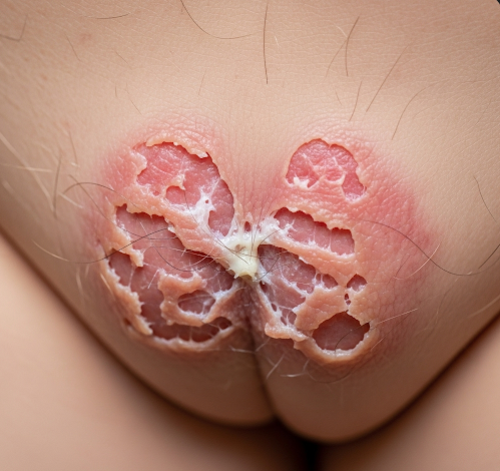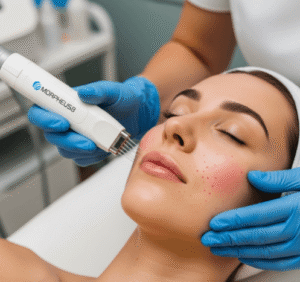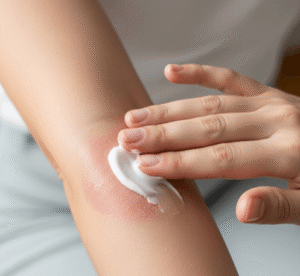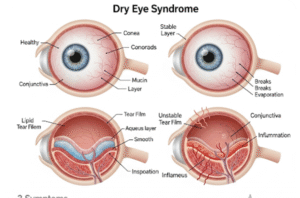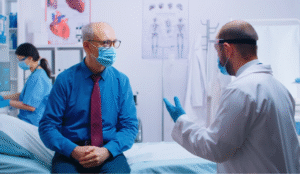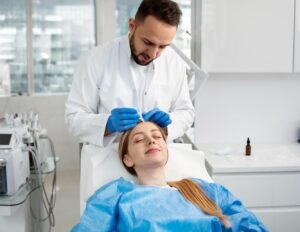Overview
Intertrigo is a common inflammatory condition that affects areas where skin surfaces rub together, such as skin folds. It results in redness, irritation, and sometimes infection in these warm, moist regions. Though generally not serious, intertrigo can cause significant discomfort and may lead to complications if untreated. In Korea, medical professionals have considerable experience managing intertrigo through effective hygiene practices, topical treatments, and patient education, making it a manageable condition with proper care.
What is Intertrigo?
Intertrigo is inflammation of the skin folds caused by friction, moisture, heat, and lack of ventilation. The condition typically occurs in areas such as under the breasts, armpits, groin, between abdominal folds, and between toes or fingers. When the skin in these regions remains damp and warm, it becomes vulnerable to irritation and secondary infections by bacteria, fungi, or yeast.
While intertrigo itself is inflammation, secondary infections—especially candidiasis caused by Candida species—are common and may worsen the symptoms. Intertrigo is especially frequent in people who are overweight, diabetic, or have compromised immune systems. It can affect individuals of all ages but is most common in infants and adults with skin folds.
Symptoms
The symptoms of intertrigo typically develop in affected skin folds and include:
- Redness and inflammation: The affected skin appears bright red and inflamed.
- Itching and burning: Patients often experience itching or a burning sensation in the affected area.
- Moist, raw, or weepy skin: The skin may become macerated due to persistent moisture.
- Cracking and peeling: In chronic cases, the skin can crack, peel, or develop sores.
- Foul odor: Secondary infections may cause unpleasant smells.
- Pain or tenderness: Especially when the area is irritated or infected.
- Scaling or crusting: In some cases, the skin may develop scaly patches.
Causes
Intertrigo is primarily caused by friction between adjacent skin surfaces combined with moisture and heat. Specific causes include:
- Excessive sweating: Warm, humid environments or physical activity increase moisture in skin folds.
- Skin-to-skin friction: Rubbing in areas like groin, under breasts, or between abdominal folds.
- Poor hygiene: Infrequent cleaning can allow sweat and bacteria to accumulate.
- Obesity: Excess body weight creates deeper skin folds that trap moisture.
- Incontinence: Urine or fecal exposure irritates the skin.
- Diabetes: High blood sugar levels increase risk of skin infections.
- Wearing tight or non-breathable clothing: Traps heat and moisture.
- Secondary infections: Yeast (Candida), bacteria (Staphylococcus or Streptococcus), or dermatophyte fungi can invade irritated skin.
Risk Factors
Certain factors increase the likelihood of developing intertrigo:
- Obesity: Larger skin folds increase friction and moisture retention.
- Diabetes mellitus: Promotes fungal infections and skin breakdown.
- Infancy: Babies have sensitive skin and frequent diaper use.
- Warm climates or humid environments: Encourage sweating and moisture buildup.
- Immune deficiency: Conditions or medications that suppress immunity.
- Poor personal hygiene: Inadequate cleaning of skin folds.
- Prolonged bed rest or immobility: Increases moisture in skin folds.
- Use of occlusive dressings or clothing: Prevents evaporation of sweat.
Complications
If untreated, intertrigo can lead to several complications:
- Secondary infections: Candida yeast infections are most common, but bacterial infections can also develop.
- Chronic skin irritation: Persistent inflammation can cause thickening and discoloration.
- Pain and discomfort: Severe cases interfere with daily activities.
- Ulceration: Skin breakdown can lead to painful open sores.
- Spread of infection: In immunocompromised patients, infection may become systemic.
Prevention
Preventing intertrigo focuses on minimizing moisture, friction, and heat in skin folds:
- Maintain good hygiene: Regularly wash and thoroughly dry skin folds.
- Keep skin dry: Use absorbent powders or moisture-wicking fabrics.
- Wear loose, breathable clothing: Cotton or moisture-wicking materials reduce sweating.
- Weight management: Losing excess weight can reduce skin folds.
- Use barrier creams or ointments: Protect vulnerable skin from irritation.
- Manage underlying conditions: Control diabetes and other health issues.
- Avoid prolonged moisture exposure: Change wet clothing or diapers promptly.
- Use antifungal powders or sprays: If prone to fungal infections, preventive treatments can help.
Treatment Options in Korea
Korean healthcare providers offer effective, evidence-based treatments for intertrigo, ensuring rapid symptom relief and preventing complications:
- Skin Care and Hygiene:
Korean dermatologists emphasize thorough cleansing of affected areas with gentle, non-irritating cleansers and careful drying. Patients are advised to avoid harsh soaps or scrubbing. - Topical Medications:
- Antifungal creams or powders: Widely used for Candida or fungal infections; common agents include clotrimazole, miconazole, and ketoconazole.
- Antibacterial treatments: Topical antibiotics may be prescribed if bacterial infection is present.
- Anti-inflammatory creams: Mild corticosteroids can reduce inflammation and itching, but are used cautiously to avoid skin thinning.
- Moisture Control:
Absorbent powders and barrier ointments, such as zinc oxide or petroleum jelly, protect the skin from ongoing moisture and irritation. - Lifestyle Modifications:
Korean clinicians provide patient education on clothing choices, weight management, and hygiene to prevent recurrence. - Treatment of Underlying Conditions:
For diabetic or immunocompromised patients, management of the primary condition is essential to control intertrigo. - Advanced Care:
In severe or resistant cases, dermatology specialists in Korea may offer phototherapy or newer topical agents. Hospitalized patients with severe infections receive systemic antifungal or antibiotic therapy. - Follow-up and Monitoring:
Korean medical centers stress the importance of follow-up to ensure resolution and prevent chronicity.

